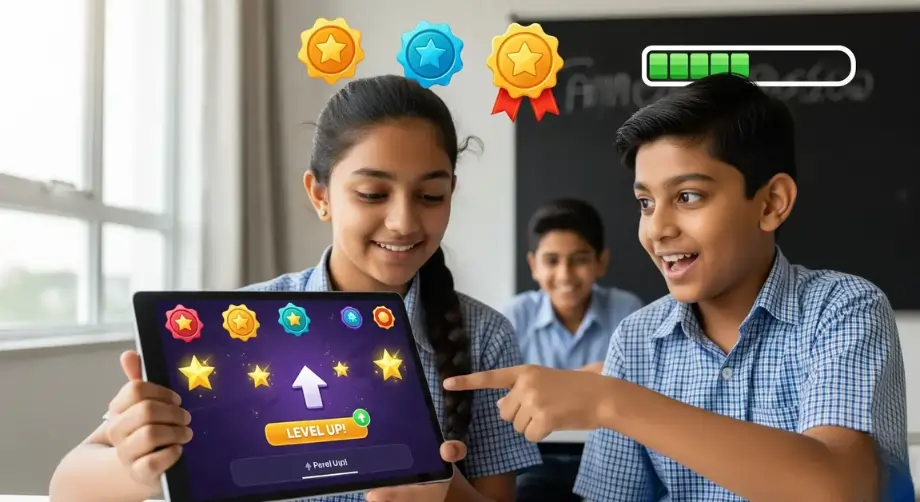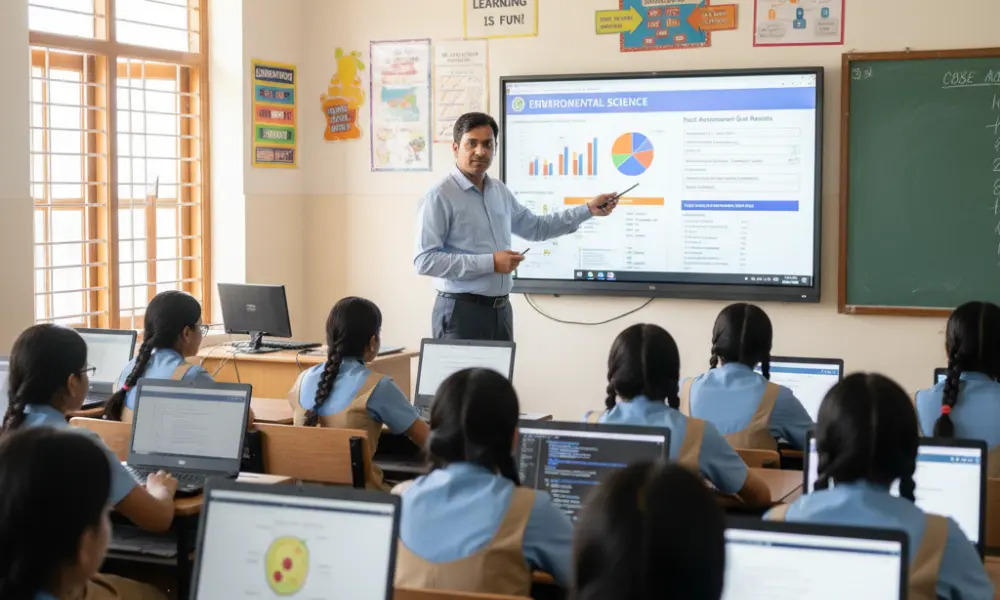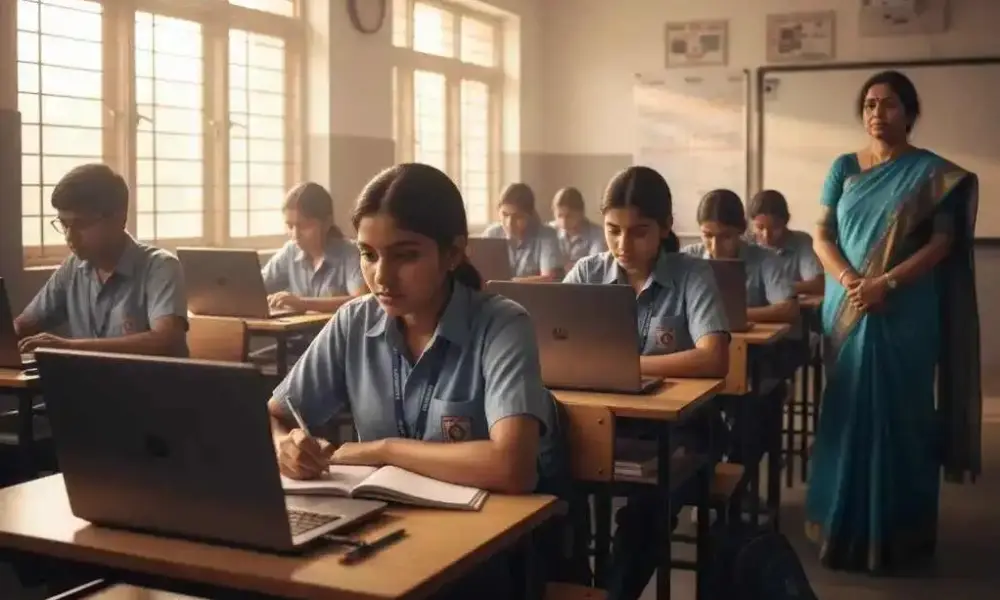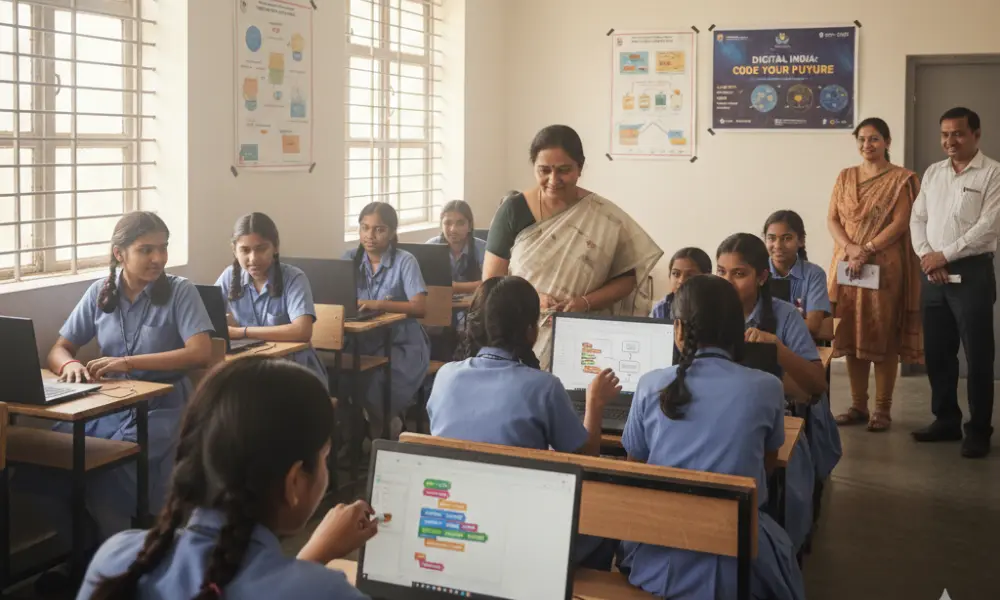Why game-based learning works so well for Indian school students
Gamified learning is backed by powerful neuroscience and psychology. This expert blog explores how reward systems, dopamine release, and India-specific school case studies show measurable success when game mechanics are integrated into learning. A must-read for CBSE students, parents, and educators.

Why learning games work so well combines both deep neuroscience and psychology. In the case studies featured on this blog, we see how India schools apply reward systems and dopamine release to learning, and the measurable success they achieve when game mechanics are woven into the education fabric. It is important to read for all the stakeholders of a CBSE school - students, their parents and teachers.
With the right impulses, the human mind can absorb academic material in far more engaging ways than reading or rote learning, as this is the case with gamified learning. It is not a passing fad, but a full-blossomed revolution, rooted in neuroscience. Engaging in education now can take the form of scoring systems, progress indicators, badges, and level unlocks, all of which are far more intuitive than the out-dated rote learning.
With a reward in sight, learning is far more engaging. Game-based learning approaches activate the hippocampus and the prefrontal cortex, crucial for forging long-term memories, strategic thinking, and controlling impulses, which create the decisive pathways towards concept comprehension. The more you care about a task, the more emotionally and cognitively intertwined you are with it, and thanks to all the right neural systems, you are more likely to achieve focused retention.
What makes gamification particularly powerful is its capacity to engage all the brain’s systems at the same time – including the visual, auditory, kinesthetic, and emotional parts – and, therefore, is a multisensory form of learning. Learning through gamification is more aligned with the way kids learn, which is through exploration, interaction, and instantaneous feedback. Unlike the more static, rigid ways of teaching, such as the sitting and listening to lectures, gamification is designed to foster curiosity, emotional investment, and active exploration.
Edzy is one of many platforms that utilizes this learning framework. Using science, Edzy creates micro-learning modules that are disguised as games. With each correct response, badge earned, and level completed, the learner receives more than just “virtual” prizes. Cognitive satisfaction.
The body’s reward mechanism is one of the most gamified learning approaches to science. As with many bodily functions, the reward mechanism has a central part, which is more commonly known as the “feel-good” chemical, dopamine. Anytime a goal is reached, say a game, or an achievement unlocks, dopamine is released in the brain and the reward mechanism activates.
This proven method can motivate students greatly within education. The instant gratification from seeing a progress bar progress or a badge being received after answering a question correctly reinforces behavior due to the dopamine response. The student is encouraged to engage in that behavior even further, in this scenario, learning.
This is what differentiates the gamified approach from rote learning, memorization and even high-stakes testing. Students, in the passive learning scenario, are given results from exams after a long wait period of days or even weeks, certainly never during the learning process. Such a long wait weakens incentive systems, rendering learning a chore.
Edzy and other gamified platform firms build what is known in psychology as a “feedback loop”. Students are given the chance to take actions that are directly tied to results, whether that be cut, positive, or constructive. Students are more than passive responders since they are actively engaged in the learning process continuously striving to pass and within an encouraging and psychologically positive structure that rewards them. The ability to cultivate and teach students to endure challenges is critical in achieving long term academic success in the future can also be automated through this technique meaning that this approach is also encouraging that success.
Every student in India is now receiving training that is either a response to their behavior or a fundamental shift as to how their learning patterns are being assumed. All around India, academic institutions are beginning to embrace this approach and to pursue further success, systematic studies from CBSE and even private schools are beginning to embrace these changes.
For instance, a school in Bengaluru started using a points-based digital system during their science and math lessons. Within 6 months, Class 8 students who participated in the program improved their internal assessment scores by 35%. Teachers observed previously disengaged students volunteering answers and preparing for class.
In Delhi, a different school substituted lectures for a weekly quiz tournament in the form of a game. Instead of traditional written tests, students participated in small groups to compete using a quiz app connected to the smart boards. The outcome showed a 40% increase in class participation, particularly from shy students who wouldn’t normally engage in class.
In Pune, a CBSE-affiliated school used Edzy’s AI-driven flashcards and leader boards for class 10 revision. Teachers noticed an increase in revision frequency and information retention. Students reported a reduction in anxiety related to board exam preparation, describing it as “training for a competition, not cramming for a test.”
All of these cases help reinforce the message that students are not just learning through gamified techniques; they are competing and growing in the process.
The difference between traditional and gamified learning is not only in the methodology employed but also in the results achieved.
In traditional learning pedagogy, students are mostly passive users. They have to attend lectures, take notes, read, cramming, and undergo tests in high-stakes environments. Motivation is a result of external factors such as grades, parental expectations, or the looming threat of failure. Feedback, when given, is vague and in the form of comments, rarely leading to actionable changes.
Active participation and interaction is a hallmark of gamified learning. Student participation turns to interaction as students, not only read, but also click, guess, think, and provide answers in real time. Understanding takes the front seat, while memorization takes the back. Because motivation shifts to every little milestone achieved, confidence and momentum builds leading to a positive feedback loop.
The future of education is gamified. Unlike traditional classes, set in stone, static, and rigid while following a one-size-fits-all approach, gamified education adapts to the requirements of each of the learners. Game-based platforms autonomously alter the level of difficulty according to the user’s history and pace, creating a tailored learning experience for every student, even those ready for advanced challenges.
With regard to traditional assessments, they are summative — evaluating students on what they have learned after the learning process has been completed. However, the gamified approach focuses on formative learning, where the emphasis is on the process of learning. Every mistake is an opportunity to improve.
Third, the reward system of gamified learning fits well with motivation in Indian culture. Students certainly enjoy collecting certificates or qualifying for the top place in a leaderboard. These are features of performance and ranking systems that students are already good at, so they resonate with Indian students.
This context is exploited by Edzy which provides CBSE content integrated with appealing games or challenges, interactive quizzes, and even AI-driven personalized suggestions which makes learning more engaging and suited for Indian learners.
While gamified education is useful at all levels of learning, its effectiveness is dependent on age.
For learners in classes 6 to 8, the most significant improvement is with attention span alongside understanding core concepts. These learners tend to pay less attention and lack consistency. With short chunks of easily achievable “mini-goals” to guide them, gamified lessons help a great deal with focus. In math and science, interactive simulations and puzzles not only help to explain core concepts but help reinforce understanding.
For students in grades 9 through 12, the perks are far more systematic. This age group grapples with intricate ideas, time-sensitive revisions, and the pressure of upcoming exams. Gamification helps by organizing revision into smaller, manageable tasks, providing instant feedback, and rewarding sustained effort. Educational platforms like Edzy go a step further by letting students self-monitor progress through dashboards and analytics, making the learning experience feel more personalized and empowering.
Above all, confidence is self-esteem boost and learning achievement and gamified learning builds confidence. This helps children understand that learning is about progress in steps, not a single attempt without missteps.
Parents or schools are more rigorous about to the issues of screen time, and need to be more careful to separate active screen time(Having learning apps not passive app) versus passive screen time.
Screen Time during classes or educational passive during lessons in comparison to active phases, guided purpose, whether through apps or platforms is very efficient. MIT and other institutions have researched, and verified, this intention accelerated focus, retention, and utilization. Using Edzy or similar learning platforms enables educators and guardians to set proper limits around screen time and engagement activities.
For those looking to implement gamified tools, start with small steps
For those looking to implement tools, game-based learning with specific apps utilize a single subject, beginning with math or science.
Monitor engagement using dashboards and progress tracking leaders boards.
Use physical rewards to enhance digital achievements or the other way around.
Motivate students to use Edzy during the times when participation usually dips, like during revision periods.
Stick to the routine: 30 minutes a day is often more valuable than several passive studying hours when learning is gamified.
The goal of gamified learning is not to eliminate traditional education, but to enhance it by grabbing learners’ attention and activating deep intrinsic motivation using brain science. CBSE students are often overwhelmed by the myriad of academic requirements, and Edzy’s gamified learning—adapting education, making it engaging, measurable, and effective - offers a revitalizing alternative. Teachers designing innovative and exciting lessons, or parents fighting to replace Instagram with NCERT books - both sides of the educational equation can find joy, science, and results through gamified learning—they can help close the gap.

Chatbots, AI Tutors, and Beyond: The Future of Smart Classrooms in CBSE Schools
Exploring the transformative role of AI in CBSE education

The Future of CBSE Examinations – AI, Adaptive Testing, and What Lies Ahead
How AI and adaptive testing could reshape CBSE exams for future-ready students

The Growing Role of Coding and AI in CBSE Curriculum – What Parents Should Know
How CBSE’s focus on coding and AI is shaping students’ future and what parents can do to help

How Ed-Tech Tools Are Helping Students With Learning Disabilities Thrive
How inclusive technology is transforming learning for CBSE students with dyslexia, ADHD, and other challenges